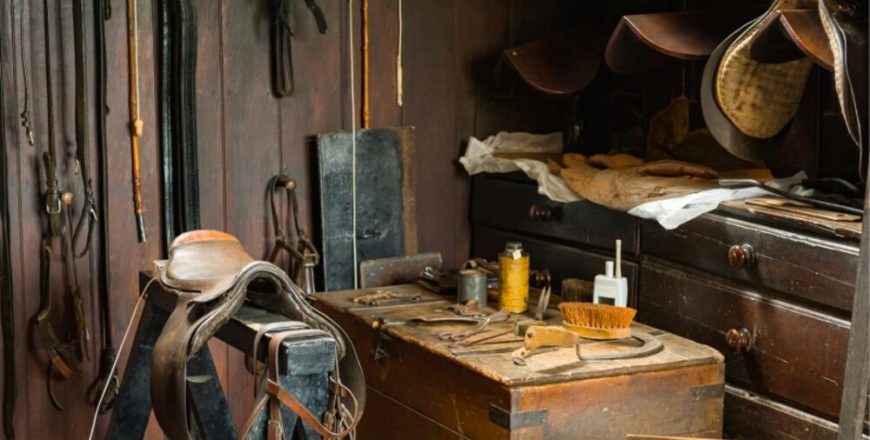
You’ll help make and repair horse saddles on a bespoke saddler apprenticeship course.
The saddlery industry promotes excellence in traditional artisan skills while embracing innovation and technology. The custom saddler is a significant player in the saddlery industry. In addition, you’ll manufacture saddles or bridles and provide saddle and equestrian equipment maintenance.
You’ll learn how to cut and produce a standard or customised product for a horse to a specific design or size. In addition, because many processes are done by hand, you will get practical skills in equestrian product manufacturing, such as measurement and pattern development.
The skills needed include a wide variety of knowledge, including craft, technical, artistic, and design understanding. In addition, these critical skills must be applied with great precision, to high standards, and within reasonable time constraints.
What you’ll learn
On a bespoke saddler apprenticeship course, you’ll learn to:
- Choose, use, maintain, and store equipment and supplies safely, such as appropriate pattern storage, sharpening tools, purchasing materials, and stock management.
- Identify and minimise risks and dangers in the workplace by using safe working practices.
- Keep meticulous records for the manufacture and upkeep of saddlery.
- Discuss and advise on the best kind of bridle/saddle leather for a specific use.
- Work as a team member for a business.
- Give excellent customer service.
- Establish a productive work environment, and develop and maintain excellent communication skills with all company workers.
- Organise the procurement of materials and inventory management.
- Prepare the materials and fittings for the bridle and saddle.
- Take responsibility for the completed bridles and appropriateness.
- Follow clear instructions from relevant colleagues to meet clients’ requirements.
- Follow and maintain work practices to ensure that safety requirements are met.
- Implement efficient and effective resource, time, and material management.
- Maintain a high degree of workmanship to satisfy commercial demands.
- Identify and utilise the right materials and fittings.
- Identify faults in the leather and the fittings.
- Prepare the supplies and fixtures.
- Determine the best threads for hand and machine stitching on various saddlery products.
- Create a cutting list based on the horse’s proportions, including cut and made-up measurements, the amount of leather and fittings required, and the relevant designs.
- Assemble your materials in preparation for sewing.
- Assemble the finished product.
Entry requirements
You’ll usually need:
- 5 GCSEs at grades 9 to 4 (A* to C), or equivalent, including English and maths, for an advanced apprenticeship
Assessment methods
The End Point Assessment comprises three distinct assessment methods:
- Written paper
- Practical skills test
- Professional presentation and discussion
Duration, level, subjects and potential salary upon completion
- Duration: 24 months
-
Level: 3 – Advanced Apprenticeship
- Relevant school subjects: Art and DT
- Potential salary upon completion: £20,000 per annum
Apprenticeship standard
More information about the Level 3 Saddler Apprenticeship standard can be found here.
Apprenticeship end point assessment
For more information about the End Point Assessment Process, please read the Institute of Apprenticeships’ information page.
